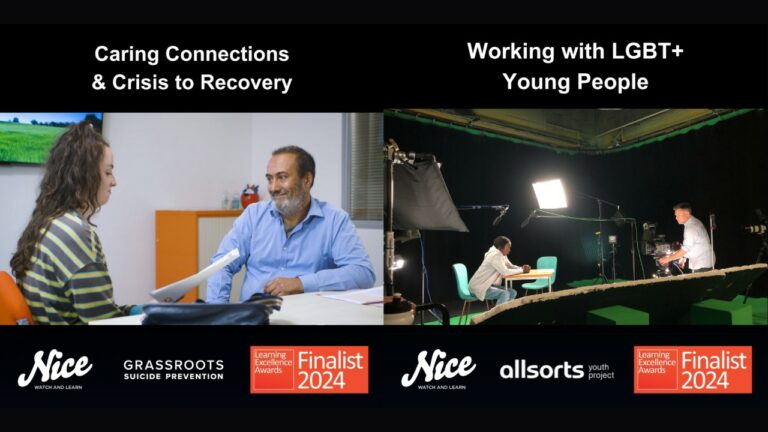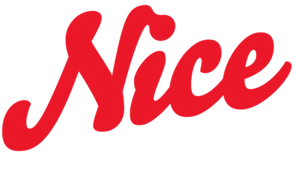EVER SEEN A LEARNING DRAMA LIKE THIS?
FRED
So this must be the new seven-fifty. I believe
it can print five hundred pages a minute
and has a lifetime warranty.
LILY
Yes, great isn’t it? Not only that, but it
remembers my log-in code and asks me if I want to
repeat my favourite tasks. Saves a lot of time.
This is a bunch of facts put into the mouths of actors, masquerading as a drama.
Such content would be better delivered by a presenter talking to camera, or in text form. The funny thing is, a script of this nature is far harder to act and direct than a script that is properly dramatized. So, how do we turn facts into drama? All stories are about facts (or imagined facts). Making facts into a story begins when we assign meaning to them.
A good way to begin is to look at what those facts mean to different stakeholders, and to embody those stakeholders as characters. Users will learn by relating to the meaning that various characters assign to the facts, and further insight by seeing how these play off against each other.
Let’s assume you’ve been handed the job of writing a scene in a realistic style, in which characters from different departments discuss the pros and cons of a new printing system that impacts each of them differently. (Unlikely, but it works here). The task of the scene is to tell the audience, in a relatable way, about the system, what it is and how it’ll work for them. There’s no point in explaining all the facts in the scene, this is the wrong place for that. What you can do very well within a drama is to give a quick and deep insight into how the change will affect the organisation, and address the various pain points about its adoption. High level facts and hearts and minds stuff.
Create profiles for different factions
Start by creating profiles of the different factions within the organisation and how they might relate to this new procedure. It might be that there’s a lot of resistance from one department, while another is very pro. Such attitudes can be grouped together and used as the basis for your characters. This work enables you to embody the attitudes of groups into symbolic characters.
Flesh out your characters
Now flesh out your characters by seeking more individual characteristics. What are their drivers? Is it money or quality of life? How do they relate to the others in this scene? Are they up or down the hierarchy? Once again, these differences can be used to articulate understanding of the issues.
Once you’ve got a cast of characters defined by job role and their interests in relation to what I’ll call the learning object, you can give them other characteristics that are less pertinent to the learning object to make them more rounded. Sex, age, personality (introvert/extrovert) and so forth. Then you can look for relationship elements within the team. Is any the boss of the other? Are there any hidden agendas? Hidden attractions? Personal secrets? Rivalries? Foibles, nationalities, enthusiasms?
To bring the scene to life we can add in some seasoning. Perhaps one of the characters is late? Another might have their mind elsewhere. One is busking it because she isn’t up to speed. One is still eating breakfast.
Once you have a group of characters with different profiles and motivations you’re off to a good start for the drama to write itself. Let’s go back to that sticky bit of dialogue from earlier. By building up Fred to be a manager obsessed with the bottom line and Lily as someone lower down the hierarchy who just wants an easy life, we could re-write the dialogue like this:
Fred stands at the printer admiring the quality of his latest documents and blocking Lily’s access.
LILY
Fred? Fred?
FRED
Ooh, sorry. I really think having this print quality
in-house is going to save us a bomb on outsourcing.
LILY
Yeah, well I’m only interested in the
time it saves me, so get a wriggle on.
Now this is pretty thin, but I hope you can see that this dialogue is motivated, that is to say tied to character and the desires of those characters.
Exposition into Ammunition
Narrative exposition is defined as “the insertion of important background information within a story; for example, information about the setting, characters’ backstories, prior plot events, historical context, etc.”
Robert McKee, perhaps the greatest screenwriting guru of recent times, said:
“Dramatized exposition serves two ends: Its primary purpose is to further the immediate conflict. Its secondary purpose is to convey information.”
That’s right CONFLICT is what drama is made of. But we can use exposition as the raw material for conflict. As McKee puts it:
“Convert exposition into ammunition. Your characters know their world, their history, each other, and themselves. Let them use what they know as ammunition in their struggle to get what they want.”
The fact that in our corporate world clients are often scared of the notion of conflict is another hurdle we have to jump. But it’s not as if we write scripts with Susan from accounts taking the CFO hostage because she doesn’t like the new invoicing procedure. We use far more palatable manifestations of conflict, but they are still one world view clashing with another. Every workplace is choc-full of conflict, and most of the time it’s dealt with politely and quietly. That is still dramatic.
Actors have to create a character and a set of relationships that are coherent and emotionally meaningful. To do so they need to know how they feel about the others in the scene. So if you do write a drama that’s just a list of facts in the mouths of thin characters, the actors and director will create hidden relationships and conflicts anyway and probably won’t tell you!
Summary points:
- All drama depends on facts and events, but the stuff of drama is CONFLICT.
- Dramatize information by giving it meaning to the characters you create.
- Begin with research. Construct your characters. Write the dialogue last of all.
As part of a series of articles A Masterclass on Video Drama, we produced this video showing an expositional version of a scene followed by the same scene with a better, dramatized script. Can you see the difference?
The 3-part masterclass, which includes several more purpose made videos, plus downloadable sample scripts, can be found here:
https://nicemedia.co.uk/video-drama-for-learning/
https://nicemedia.co.uk/video-drama-scriptwriting/
https://nicemedia.co.uk/production-values/
Our guide to script formatting can be found here:
https://nicemedia.co.uk/video-script-formatting-guidelines/







